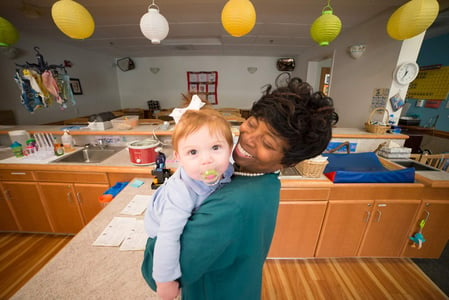
The rapid pace of human development in the first three years of life requires teachers and caregivers to be nimble. Whether a family member or teacher, you must be on your toes to effectively support a baby’s development, constantly gauging the child’s needs and changing your approach to meet those needs. With all this change occurring, how do we ensure that consistent, high quality care is provided during this critical time period, in which brain development profoundly impacts success later in life? Thankfully, we now have a plethora of brain science to understand the implications of the quality of experiences, like this excellent report from the Institute for Child Success.
It’s a timely report, too, as we we’re all excited at the recent announcement by the Department of Health and Human Services of the Early Head Start-Child Care Partnership and Early Head Start Expansion Awards aimed at improving and expanding access to infant and toddler care.
These preliminary winners are partnerships of new or existing Early Head Start grantees and center-based or family child care programs that commit to providing high quality care for infants and toddlers. This kind of care and teaching requires utmost awareness and reflection from teachers and caregivers, and is delivered through the types of interactions described by the Infant and Toddler CLASS measure.
Fortunately, with the backdrop of the growing body of early brain development research, there is growing consensus around the critical importance of early relationships for healthy child development. The focus on developing and supporting relationships is aligned in both the principles and cornerstones of Early Head Start and the infant and toddler CLASS measures, where interactions that form supportive, responsive relationships are described in detail in the toddler domains of Emotional and Behavioral Support and Engaged Support for Learning, as well as in the infant CLASS domain of Responsive Caregiving.
Head Start programs serving older preschoolers (primarily 3’s and 4’s) are required to deliver high quality teaching through the types of effective teacher-child interactions described by the preschool CLASS tool, and Early Head Start programs and their child care partners can do the same. The CLASS tool aligns across age levels and provides one observation and professional development system to observe, train, and support programs serving children from birth to age five.
While the Office of Head Start has not announced selection of a tool for use in Early Head Start to observe teacher/caregiver-child interactions, at Teachstone, we offer training and professional development on the infant, toddler and preschool CLASS tools to ensure that every child, from birth onward, can be in classrooms and in relationship with teachers and caregivers knowledgeable of and supported in providing interactions that matter for children.

